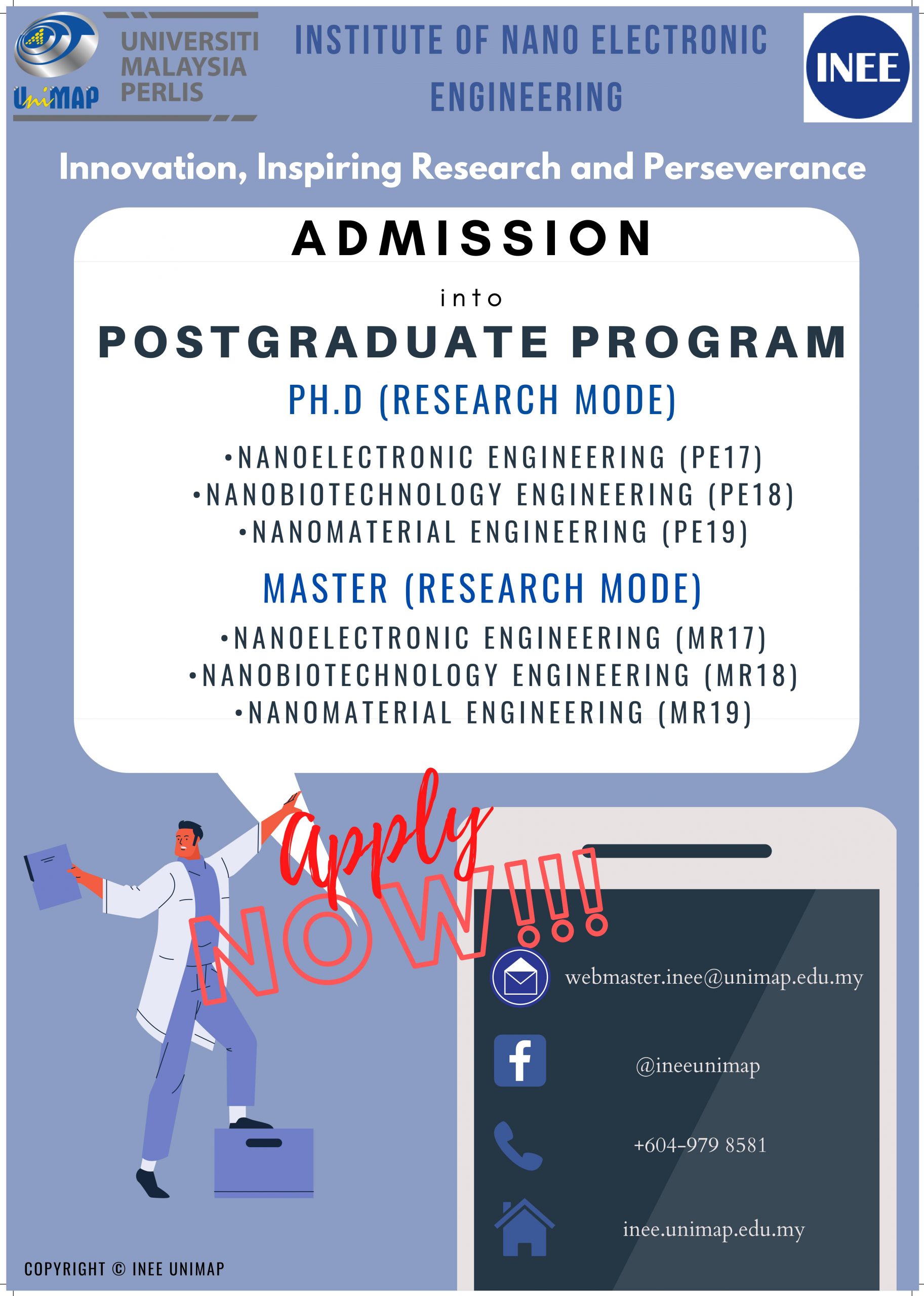
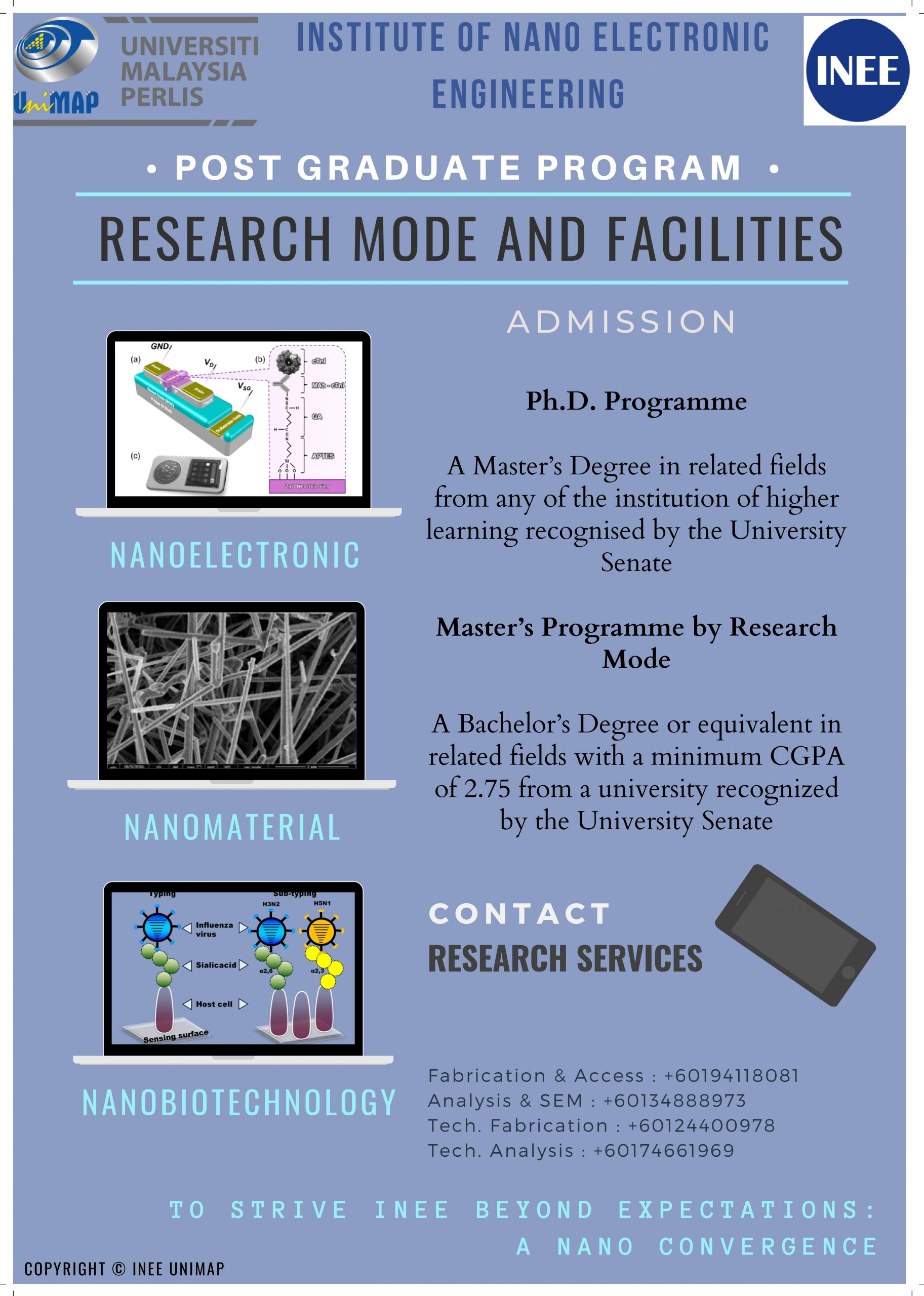
For more information and applications, please click here.
Institute of Nano Electronic Engineering
Universiti Malaysia Perlis
By Editor


For more information and applications, please click here.
By Editor
Congratulations to Karima Gherab (Ph.D student under PE18 – Nanobiotechnology Engineering programme) and her supervisor, Prof. Ts. Dr. Uda Hashim for a new Journal Article publication in Journal of Materials Research and Technology entitled “Fabrication and characterizations of Al nanoparticles doped ZnO nanostructures-based integrated electrochemical biosensor”.
K. Gherab, Y. Al-Douri, U. Hashim, M. Ameri, A. Bouhemadou, K. M. Batoo, S. F. Adil, M. Khan, and E. H. Raslan, “Fabrication and characterizations of Al nanoparticles doped ZnO nanostructures-based integrated electrochemical biosensor,” J. Mater. Res. Technol., vol. 9, no. 1, pp. 857–867, Jan. 2020.
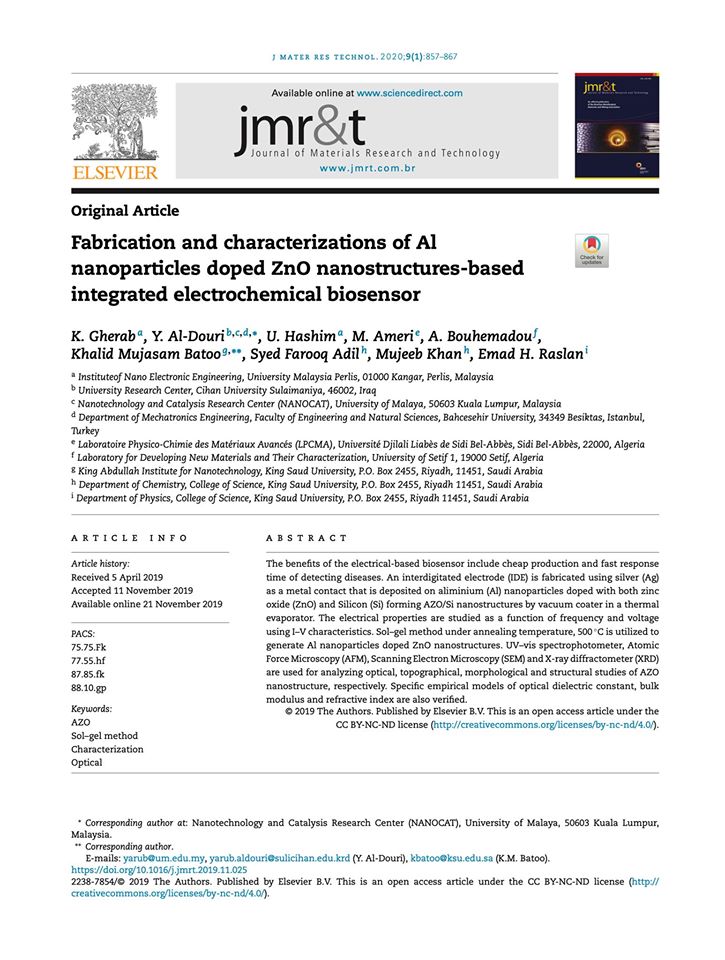
By Editor
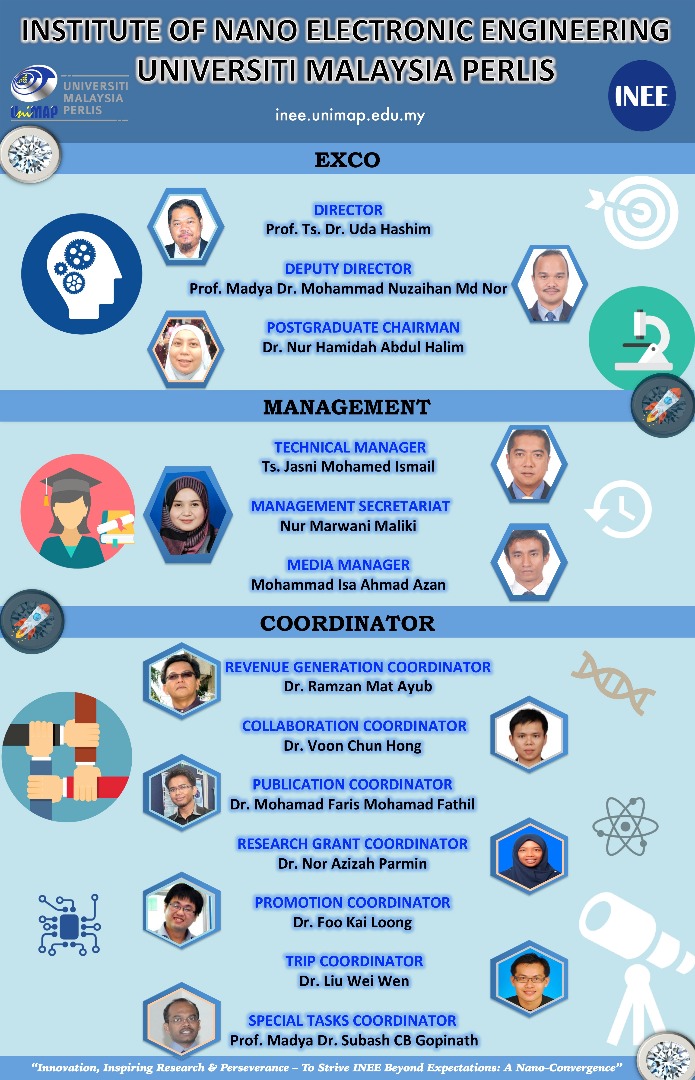
By Editor
Following the government’s Movement Control Order (MCO) to prevent the widespread of the COVID-19 outbreak, INEE’s staff are no exception to the implementation.
However, the MCO does not prevent us from continuing to work at home.
To continuously monitor and streamline our work progress, we held meetings through WhatsApp Group and Google Meet sessions.
These online meetings have helped us perform our duties throughout the MCO.
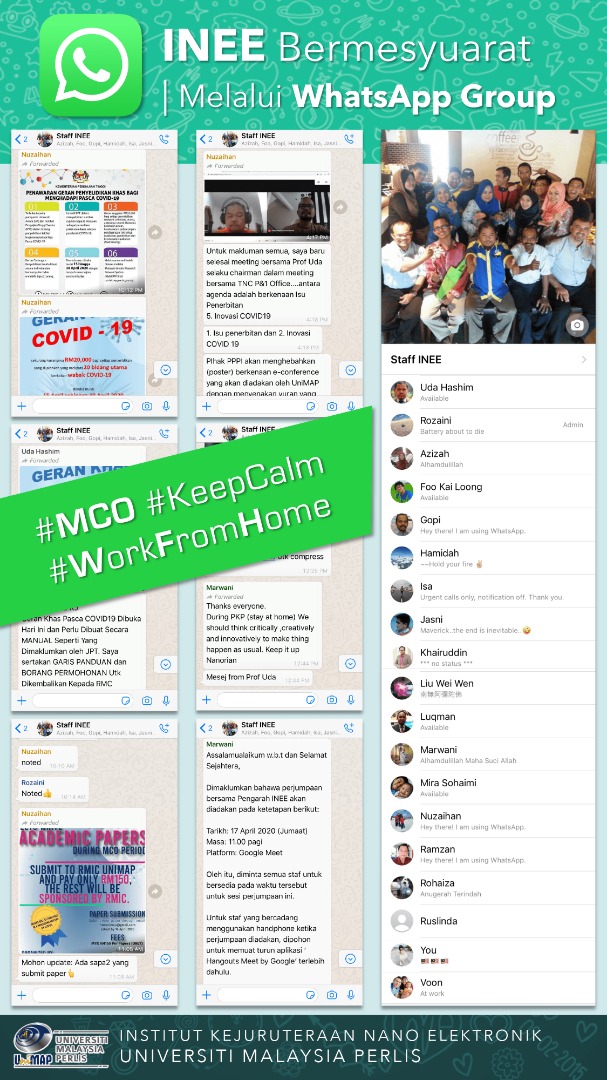
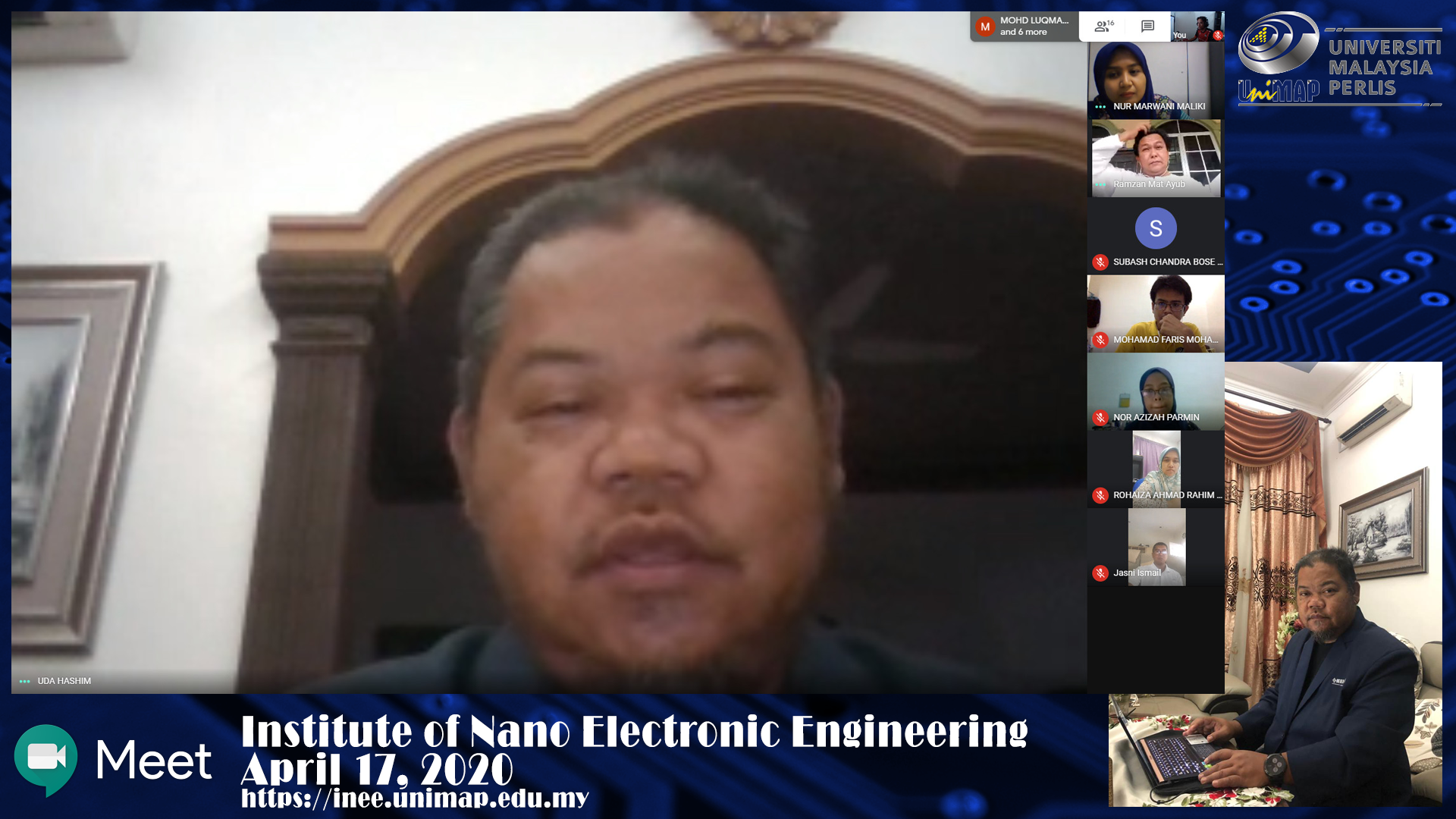
By Editor

Institute of Nano Electronic Engineering, Universiti Malaysia Perlis
Lot 106, 108 & 110, Blok A, Taman Pertiwi Indah,
Jalan Kangar-Alor Setar, Seriab 01000 Kangar, Perlis, Malaysia
Tel: +604-979 8581 Fax: +604-979 8578 Email: webmaster.inee@unimap.edu.my